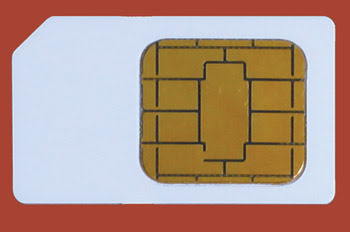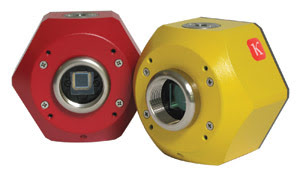Bringing the electronic signature process to the camera boosts image authentication.
Dieter Gellrich, Kappa opto-electronics GmbH
In this age of increasing security needs, data authentication is increasingly important. In the past, methods such as computer-based cryptography were used, but the image and the related data could be manipulated on a computer or changed before they were signed.

The crypto-chip authenticates images taken with the camera and assures that they cannot be tampered with.
Today, a unique approach uses a CCD camera that authenticates images with an electronic signature in applications such as traffic surveillance, expert reports, quality assurance documentation, claims for compensation and criminal proceedings. The DX 4/40 S camera series from Kappa opto-electronics GmbH of Gleichen, Germany, offers the ability to provide a digital image together with accompanying data — such as serial numbers, and measurement and quality assurance data — with an electronic signature directly in the camera.
Digital images taken with the electronic signature camera cannot be tampered with, changed or misused because the cameras use the RSA 1024-bit signature scheme (the RSA encryption algorithm was developed and published in 1978 by Rivest, Shamir and Adleman) in combination with the SHA-512 hash function.
The RSA 1024-bit scheme is a method of cryptography that uses one private and one public key. The SHA-512 hash function is a complex mathematical algorithm that turns the image data into a 512-bit-long hash value. This value is so unique that it is nearly impossible to find a second document or image with a matching value, making it as safe as a fingerprint of the image.
This value is encrypted in real time inside the camera by the RSA cryptography method. The pair of keys is generated inside the camera. The hash sum is encrypted with the private (unknown) key. With the appropriate public key, the signature and the authentication of the data can be approved. The signature and the public key are attached to the original image.
The image with the signature can be stored, printed or transmitted via the Internet. The receiver of the image can ensure its integrity by decrypting the signature with the public key. The hash value of the image is calculated and compared with the decrypted value. If both values are identical, the image was not manipulated, the signature is valid, and the authentication of the image is given. If the image was manipulated, the calculated hash value of the image and the decrypted value of the signature will differ. In this case, the signature is invalid, and the authentication is not given. Even a manipulation of one pixel inside the image leads to an error.
The authentication is reliable enough that the images are admissible in court. The signature prevents images from being tampered with, changed or misused, and it can prove whether the data has been manipulated.
The major advantage of encoding the digital signature of image data directly inside the camera lies in its authenticity, because the image and the related data cannot be manipulated before being signed. In addition, the images are compliant with the US Food and Drug Administration’s code, published in 1997, that specifies criteria for the reliability and confidentiality of electronic documents and signatures.
In actual use, the CCD camera can be used to prove that a product is what it claims to be, such as in pharmaceutical applications where production data, serial numbers and reference images all can be stored to verify the product. The cameras also can detect forged or counterfeited documents or currency. Likewise, medical images of patients can be authenticated together with the related personal data. In traffic monitoring, where the image of a speeding offense is signed together with the measured speed, the date and time, the images are admissible in court as evidence of who was speeding, how fast and when.
Another application where the cameras are used is the documentation of meter readings. When an industrial meter must be replaced, the image of the meter reading is authenticated together with the accompanying data, such as the name of the technician, the date and the serial number. In this way, if the reading is challenged, the data can be verified.

The Kappa camera has a crypto-chip inside its hexagonal housing.
The signature option is available with all digital Kappa megapixel camera systems with the Camera Link interface. The camera series is based on variable camera electronics, low power consumption, advanced circuitry and a rugged design. The housing is available in a standard cubic design or as a hexagonal package. The 12-bit digital signal processing, together with the internal color processing, delivers high-quality images with highly linear signal quality and signal-to-noise ratio. High frame rates are achieved by binning and partial scan, whereas image size is freely adjustable.
This camera series, together with the Kappa Image-Base software, provides solutions for medical engineering, process automation, quality control and scientific diagnostics.
Meet the author
Dieter Gellrich is the key account manager at Kappa opto-electronics GmbH in Gleichen, Germany; e-mail: [email protected].